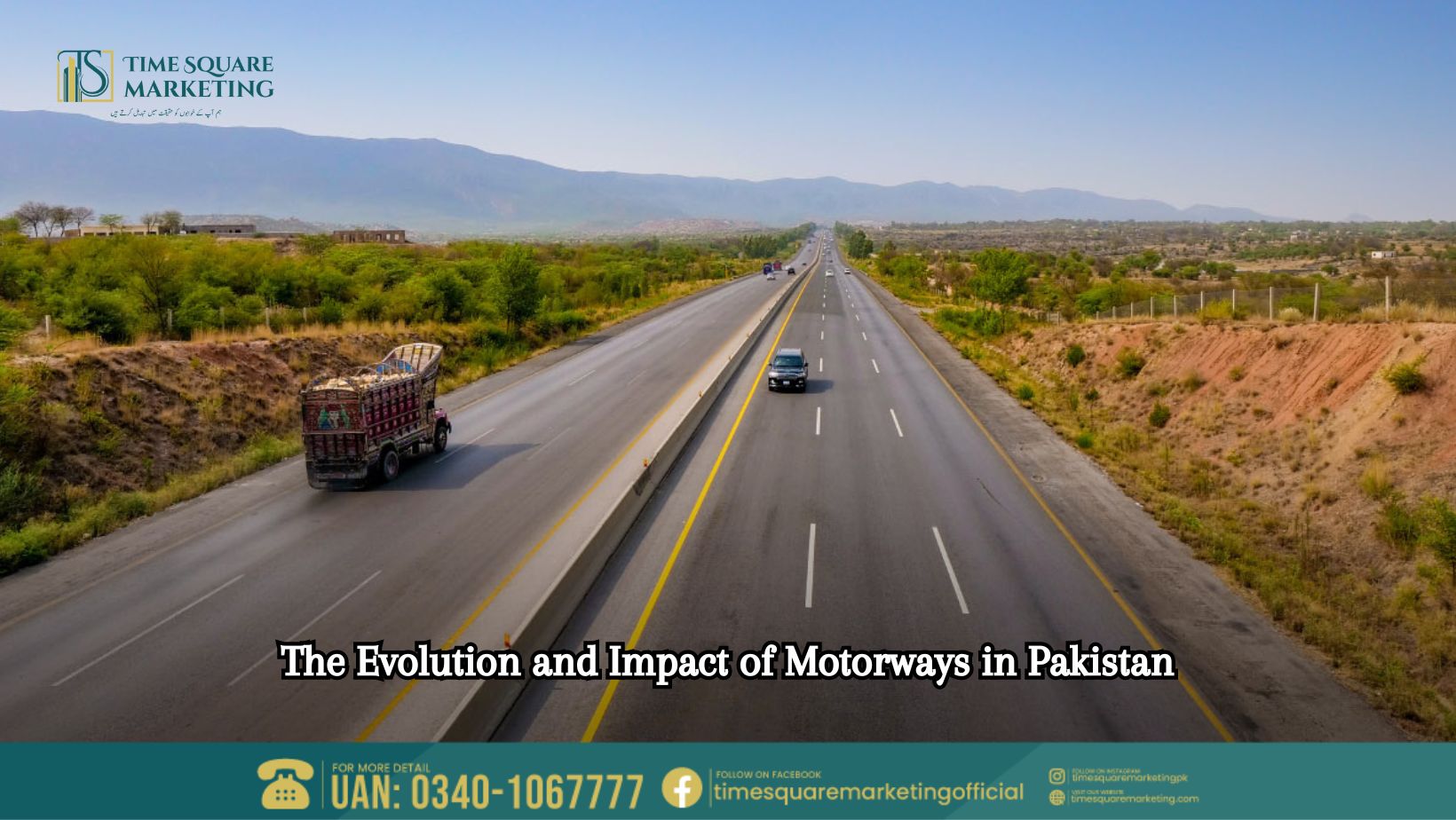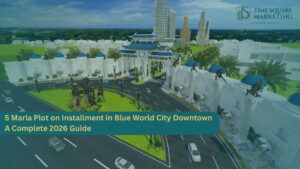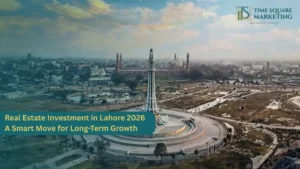Motorways in Pakistan have become a symbol of modern infrastructure, playing a crucial role in the country’s economic development, regional connectivity, and societal progress. This extensive network, spanning across the length and breadth of Pakistan, offers a glimpse into the nation’s ambitions and its drive towards modernization. This blog delves into the history, development, significance, and future prospects of the motorways in Pakistan, shedding light on how they have transformed the landscape of the country.
The Genesis of Motorways in Pakistan
The concept of motorways in Pakistan was first materialized in the early 1990s with the construction of the M-2 Motorway, connecting the capital city of Islamabad with the cultural hub of Lahore. This 375-kilometer stretch, inaugurated in 1997, was the first of its kind in South Asia. The M-2 Motorway set the precedent for future motorway projects, emphasizing high-quality road infrastructure designed to international standards.
The success of the M-2 paved the way for further expansions. The network gradually grew to include several key routes such as the M-1 Motorway (Islamabad to Peshawar), M-3 Motorway (Lahore to Abdul Hakeem), and M-4 Motorway (Faisalabad to Multan), among others. Each of these motorways has contributed to enhancing connectivity, reducing travel times, and promoting economic activities across the regions they serve.
Economic Implications
The economic impact of the motorways in Pakistan cannot be overstated. These highways have significantly reduced the cost and time of transportation, facilitating smoother trade flows both domestically and internationally. For instance, the M-2 Motorway has drastically cut down the travel time between Islamabad and Lahore from seven hours to approximately four hours, making it a vital artery for business and trade.
Moreover, the motorways have spurred economic growth by opening up remote areas for development. Regions that were once considered isolated are now accessible, attracting investments in industrial zones, housing societies, and commercial centers. The M-4 Motorway, for example, has been instrumental in transforming the agricultural heartland of Punjab, promoting agro-based industries and boosting exports.
The motorways also play a crucial role in Pakistan’s logistics and supply chain sectors. The seamless connectivity between major cities ensures that goods can be transported efficiently, reducing delays and costs. This efficiency is particularly beneficial for perishable goods, ensuring they reach markets in optimal condition, thereby reducing wastage and improving profitability for farmers and traders alike.
Social and Regional Connectivity
Beyond economic benefits, the motorways have also had profound social implications. They have enhanced regional connectivity, bridging the gap between urban and rural areas. Improved access to education, healthcare, and employment opportunities has been one of the significant social dividends of the motorway network.
Educational institutions and healthcare facilities in major cities are now more accessible to people from remote areas, leading to better educational outcomes and improved health standards. For instance, the M-1 Motorway has made it easier for students from Khyber Pakhtunkhwa to attend universities in Islamabad and for patients to access specialized medical treatments in the capital.
Furthermore, the motorways have contributed to national integration by fostering a sense of unity and cohesion among diverse regions. By facilitating inter-provincial travel, they have enabled cultural exchanges and promoted understanding among different ethnic and cultural groups within Pakistan.
Impact of Motorway on Real Estate
The development of motorways in Pakistan has had a transformative impact on the real estate sector, significantly boosting property values and spurring urban expansion. As connectivity between cities and remote areas has improved, previously underdeveloped regions have become attractive for residential, commercial, and industrial investments.
The enhanced accessibility and reduced travel times have led to the proliferation of housing societies, commercial centers, and industrial zones along these highways. Consequently, land prices have surged, and new urban hubs have emerged, fostering economic growth and generating employment opportunities. This motorway-driven real estate boom has not only provided lucrative investment opportunities but has also contributed to the overall modernization and urbanization of the country.
You may also explore: Blue World City Islamabad
Technological Advancements and Safety
The motorways in Pakistan are not just about connectivity; they are also a testament to technological advancements and a commitment to safety. These highways are equipped with modern amenities and safety features, ensuring a comfortable and secure travel experience.
Advanced surveillance systems, emergency response units, and well-maintained rest areas are some of the features that enhance the safety and convenience of motorists. The motorway police, established specifically to monitor and manage these highways, play a vital role in maintaining order and ensuring that traffic rules are followed.
Moreover, the motorways are designed to withstand the challenges posed by varying weather conditions and heavy traffic. The use of high-quality materials and adherence to stringent construction standards ensure their durability and longevity. Regular maintenance and upgrades are carried out to keep the infrastructure in top condition, minimizing the risk of accidents and ensuring a smooth flow of traffic.
Environmental Considerations
While the motorways have brought numerous benefits, their environmental impact is a subject of concern. The construction and operation of these highways have led to the displacement of natural habitats and an increase in vehicular emissions. However, efforts are being made to mitigate these impacts through various initiatives.
One such initiative is the plantation of trees along the motorways, aimed at offsetting carbon emissions and enhancing the aesthetic appeal of these highways. Additionally, there is a growing emphasis on promoting the use of electric vehicles (EVs) to reduce the carbon footprint of road transportation. Charging stations for EVs are being installed along major routes to encourage the adoption of cleaner and more sustainable modes of transport.
Future Prospects
The future of motorways in Pakistan looks promising, with several new projects in the pipeline. The China-Pakistan Economic Corridor (CPEC) is a game-changer in this regard, with significant investments being made in the road infrastructure under this initiative. The CPEC’s western route, which includes the construction of new motorways and the upgrading of existing roads, is expected to further enhance connectivity and economic integration.
Moreover, there is a focus on leveraging technology to make motorways smarter and more efficient. Intelligent Transportation Systems (ITS) are being introduced to manage traffic flow, reduce congestion, and enhance safety. These systems use real-time data and analytics to optimize road usage, ensuring a smoother and more efficient travel experience.
The government is also exploring the potential of public-private partnerships (PPPs) to fund and develop new motorway projects. By involving the private sector, it aims to accelerate the expansion of the motorway network while ensuring financial sustainability.
Conclusion
The motorways in Pakistan are more than just roads; they are lifelines that drive economic growth, enhance regional connectivity, and improve the quality of life for millions of people. From their inception in the 1990s to the ambitious projects being undertaken today, these highways have played a pivotal role in shaping the nation’s infrastructure landscape.
As Pakistan continues to invest in and expand its motorway network, the focus must remain on balancing development with sustainability. By adopting environmentally friendly practices, leveraging technology, and fostering inclusive growth, the motorways can continue to be a catalyst for progress and prosperity in the years to come.








